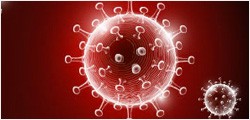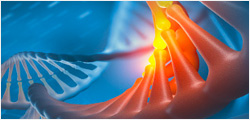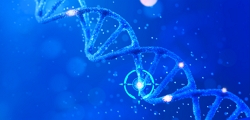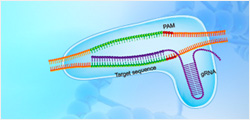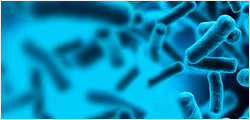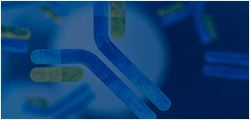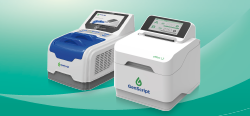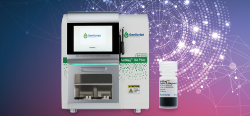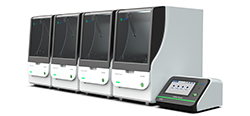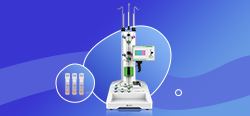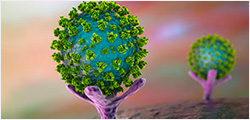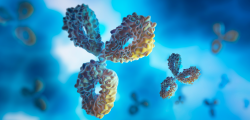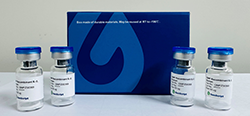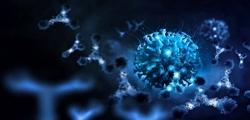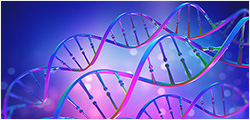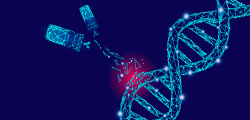| Expression System |
E.coli
|
| Species |
Serratia Marcescen
|
| Tag |
Tag-free
|
| Theoretical Molecular Weight |
27.5 kDa
|
| Biological Activity |
≥ 1.1×106
U/mg
One unit
of Benz-Neburase, tag-free is defined as the amount of enzyme for a ∆A260 of
1.0 (equivalent to the complete digestion of 37μg DNA) in 30 min. |
| Formulation |
Supplied
as a solution of 20 mM Tris-HCl, 2 mM MgCl2, 20 mM NaCl, 50% Glycerol, pH 8.0.
|
| Apparent Molecular Weight |
~27.5 kDa, on SDS-PAGE
under reducing conditions
|
| Storage & Stability |
This product remains stable for up to 2 weeks at 4 °C or up to 24 months at -20 °C.
Avoid repeated freeze-thaw cycles.
Do not store below -20 °C! |
|
The Benz-Neburase™ is an endonuclease capable of
removing all forms of DNA and RNA, including double stranded, single stranded,
linearized, and circular forms. The Benz-Neburase is
commonly used in biopharmaceutical production such as vaccine, viral vector,
gene and cell therapy manufacturing facilities. |
The activity of Benz-Neburase™, tag-free requires 1-2 mM Mg2+.
|
| Purity |
≥ 95% as analyzed by reducing SDS-PAGE
|
| Enzyme Activity |
≥
250 U/μL
|
| Endotoxin Level |
≤ 0.1 EU/kU as determined by gel clotting method.
|
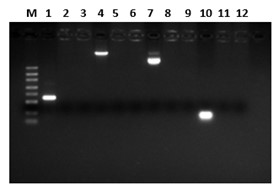
Lane M: DNA marker
Lane 1: PCR product
Lane 2: GenScript Benz-Neburase™, tag-free + PCR product
Lane 3: Competitor endonuclease+ PCR product
Lane 4: Genomic DNA
Lane 5: GenScript Benz-Neburase™, tag-free + Genomic DNA
Lane 6: Competitor endonuclease + Genomic DNA
Lane 7: Plasmid DNA
Lane 8: GenScript Benz-Neburase™, tag-free + Plasmid DNA
Lane 9: Competitor endonuclease + Plasmid DNA
Lane 10: RNA
Lane 11: GenScript Benz-Neburase™, tag-free + RNA
Lane 12: Competitor endonuclease + RNA
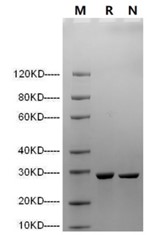
Lane M:SDS-PAGE marker
Lane R:Reducing (R)
Lane N:Non-reducing (NR)
Purity: > 95% as analyzed by SDS-PAGE
| Target Background |
The Benz-Neburase is a
genetically engineered endonuclease from Serratia marcescens used as a
DNA eraser in the purification processes of biological molecules. The enzyme
cleaves all forms of DNA and RNA into smaller nucleotides of around 5-8 base
pairs. Benz-Neburase requires divalent cation, preferably Mg2+ for
activity, displays a broad pH tolerance, ranging from pH 6 to pH 10, with an optimal
pH of 8-8.5, and has a wide temperature tolerance, ranging from 35 °C to 44 °C. The nuclease is a
physiologic homodimer and functions more progressively than the monomer. Two
disulfide bonds in the nuclease are crucial to its activity and stability. The
enzyme is active in a broad range of conditions and is free of proteolytic
activity. This makes the enzyme especially useful for biopharmaceutical applications
with contaminating DNA residue, such as lysed host cells in viral vector
manufacturing processes.
|
| Synonyms |
alternative to Benzonase®
Benzonase
is a registered trademark of Merck KGaA |
| References |
1. Nestle, Marion, and W. K. Roberts. "An
extracellular nuclease from Serratia marcescens: I. Purification and some
properties of the enzyme." Journal of Biological Chemistry 244.19
(1969): 5213-5218.
2. Benedik, Michael J., and Ulrich Strych.
"Serratia marcescens and its extracellular nuclease." FEMS
microbiology letters 165.1 (1998): 1-13.
3. Filimonova, Maria N., Kurt L. Krause, and
Michael J. Benedik. "Kinetic studies of the Serratia marcescens
extracellular nuclease isoforms." Biochemistry and molecular
biology international 33.6 (1994): 122-1032.
4. Friedhoff, Peter, et al. "A procedure for
renaturation and purification of the extracellular Serratia marcescens nuclease
from genetically engineered Escherichia coli." Protein expression
and purification 5.1 (1994): 37-43.
5. Franke, Ingo, Gregor
Meiss, and Alfred Pingoud. "On the Advantage of Being a Dimer, a Case
Study Using the Dimeric Serratia Nuclease and the Monomeric Nuclease from
Anabaena sp. Strain PCC 7120." Journal of Biological Chemistry 274.2
(1999): 825-832. |
For laboratory research use only. Direct human use,
including taking orally and injection and clinical use are forbidden.


